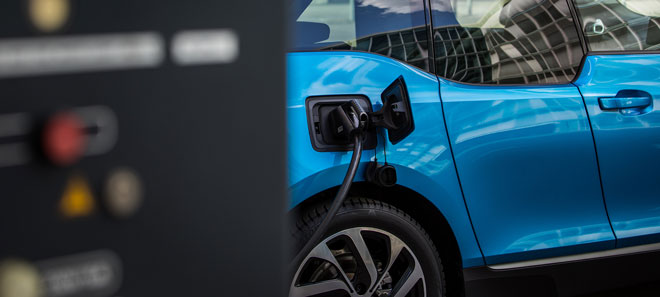The demand for electric vehicles (EV) continues to grow. According to the IEA (International Energy Agency), there will be about 125 million EVs on the road by 2030. EVs have made significant progress in the last few years, and their number across the world is on the increase. Canada ranks as 13th (out of 30 IEA member countries) with 23,620 EVs. To support and expand the adoption of electric-powered vehicles; cities are embracing utility project investments in EV infrastructure.
What are EV charging stations?
One of the benefits of EV drivers is never having to fill a gas tank. Instead (EV's) Electric have a battery that needs regular charging (like with other electronic devices) which makes charging stations an integral part of owning an electric vehicle.
There are three different charging stations or chargers:
- EV chargers – Level 1. They can be plugged into a standard outlet and use a 120 Volts AC plug. Most often used at home, they deliver 2 to 5 miles of range per hour of charging.
- EV chargers – Level 2. Level 2 chargers use a 240 or 208 Volts feed, are typically used for both commercial and residential charging stations and must be installed by a professional.
- DC fast chargers – Level 3. Also known as CHAdeMO, these chargers can deliver 60 to 100 miles of range in about 20 minutes of charging. In North America they use a 480 Volts three phase feed because they require high power. In addition to being a highly specialized piece of equipment, they are more costly than level 2 chargers.
Global support to push forward electric car technology
Generous subsidies and tight regulation continue to drive much of the growth across the world. Canada announced new initiatives for investing in support for EV chargers starting with financial support for 900 CHAdeMO and CCS chargers. It has also announced a $130 million investment from 2019 to 2024 to deploy a network of charging stations in more localized areas and in infrastructure for mass transit, delivery fleets, and corporate fleets.
Petro-Canada is building a network of Level 3 (DC) fast chargers from Halifax to Vancouver to keep people moving on the road. Electrify Canada also announced that it’s constructing 32 ultra-fast and fast charging stations in Quebec, Ontario, and southern British Columbia.
In the U.S., New York, New Jersey, and California have announced a $1.3 billion investment in building more charging stations, while some countries are preparing their plans for the future.
How the electric car movement impacts property owners
The demand for EVs is growing. Investing in electric vehicle infrastructure is a logical step for landlords to keep up with increasing demand by installing electric vehicle-charging stations. Developers in certain jurisdictions are required to install electric vehicle-charging stations into new condos with parking spaces. In all cases whether a new installation or a retrofit in existing buildings represents a challenge.
Electric Vehicle Energy Management Systems (EVEMS) allow buildings to control the load used by EV chargers, therefore; increasing the number of EV charges available and reducing the infrastructure cost.
What is an Electric vehicle energy management system (EVEMS)
The addition of EVchargers equals an additional electric load to the building that requires a certain size of breaker, feeder and adds to the contracted energy demand of the building. These additions can result in a total energy load that exceeds the existing capacity in an existing building, or a costly installation in a new building.
EVEMS monitor and control the power drawn by the EVSE, so that the EV chargers total load don’t exceed the limits of the feeder, or of the contracted demand. Thankfully the latest Canadian Electric Code recognizes that need and has included the new Rule 8-500 and Sub Rules 8-106 (11) and (12), allowing for the installation of such systems.
This is possible because it is unlikely that all the chargers are used all the time and all the EVs would be at the same level of charge. As EV batteries reach 80% of charge the current drawn on the charger decreases, allowing the amount of current draw reduced be used by another vehicle plugged to an adjacent charger.
While there are smart chargers that combined may provide similar control; some EVEMS include the over-current and short-circuit protection for each individual charger and a Measurement Canada Approved meter to allow legal billing of the energy to the users.
Investing in the EV charger infrastructure is an ideal way to support the carbon footprint of our economy and a practical contribution to a 100% renewable energy (Low-carbon future) for all transportation modes by 2040.


